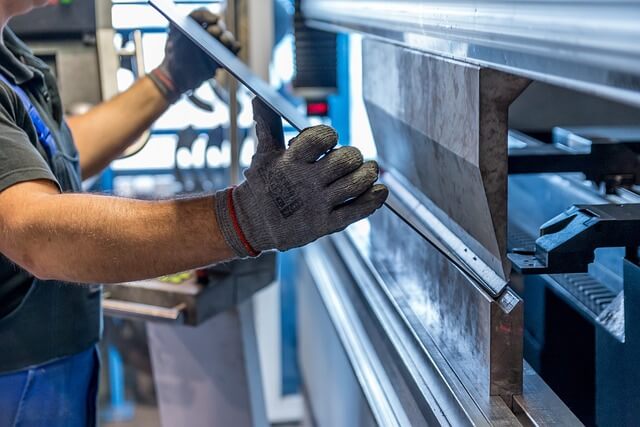Microwaves are a staple in modern kitchens, offering convenient and fast food heating. But for distributors, understanding the factors behind a microwave’s manufacturing cost is crucial for selecting the right suppliers. This article delves into the key aspects influencing microwave production costs and offers valuable tips for choosing a reliable manufacturer.

I. Microwaves: More Than Just Heating
While microwaves primarily heat food using electromagnetic waves, there’s a variety available. These include countertop models, built-in microwaves, and even grill microwaves with added functionalities. A basic understanding of these types is essential, but for distributors, this article focuses on the factors affecting manufacturing costs and how to select a supplier for optimal profitability.

II. What Drives Microwave Manufacturing Costs?
Several key elements influence the cost to produce a microwave:
· Size: Larger microwaves generally require more materials and labor, leading to higher manufacturing costs.
· Features: Microwaves with advanced features like digital displays, sensor cooking, and inverter technology will be more expensive to produce.
· Materials: Microwaves made with higher-quality materials like stainless steel and tempered glass typically have a higher manufacturing cost.
· Country of Origin: Labor costs can vary depending on the manufacturing location. Microwaves produced in countries with lower labor costs might be more affordable.
III. Breaking Down the Manufacturing Cost Structure
A. A Look Inside the Microwave Manufacturing Process
The basic microwave manufacturing process can be divided into several stages:
1. Cabinet and Door Assembly: Sheet metal components are formed, welded, or joined to create the microwave’s outer shell and door.
2. Inner Liner and Cavity Creation: The inner cavity is constructed using sheet metal or plastic, with proper insulation for efficient heating.
3. Component Integration: The magnetron, transformer, turntable motor, and control panel are installed and wired.
4. Testing and Packaging: Microwaves undergo rigorous testing for safety and functionality. After passing inspection, they are packaged for safe transport.
B. The manufacturing cost of a microwave
The manufacturing cost of a microwave can vary significantly depending on the factors mentioned above. Here’s a breakdown of the key cost components:
Direct Costs:
o Raw materials: Sheet metal, plastic components, magnetrons (the core heating element), and transformers are some of the essential raw materials.
o Labor: Assembly line workers and quality control personnel contribute significantly to the cost.
o Overhead: Factory rent, utilities, and equipment depreciation are ongoing expenses.
Indirect Costs:
o Research and development: Designing new features and improving efficiency requires investment.
o Marketing: Creating brand awareness and product promotion.
o Distribution: Costs associated with shipping finished microwaves to distributors.
It’s important to note that the manufacturing cost is just a fraction of the retail price. Distributors and retailers typically add a markup to cover their expenses and generate profit.
Here’s a breakdown of how it works:
Distributor: They buy in bulk from manufacturers and then resell to retailers. Their markup covers things like storage and transportation costs, marketing and sales efforts, and of course, their own profit.
Retailer: They buy from distributors and sell directly to consumers. Their markup covers similar expenses as distributors, including storage space in their stores, staff wages, marketing, and utilities. They also factor in their desired profit margin.
The specific markup percentage can vary depending on the industry, the product itself, and even factors like competition. Generally, it can range anywhere from 20% to as high as 40%, but some products may have lower or higher markups depending on these factors.

IV. Why Partnering with a Microwave Manufacturer Makes Sense
Entering the microwave manufacturing industry requires significant capital investment and expertise. Partnering with a reliable manufacturer offers several advantages for distributors:
· Reduced Risk: Distributors avoid the complexities and risks associated with setting up a manufacturing facility.
· Focus on Distribution: Distributors can dedicate their resources to building strong sales networks and customer relationships.
· Profitability: By sourcing from a cost-effective manufacturer, distributors can achieve higher profit margins.
V. Choosing the Right Microwave Manufacturer
When selecting a microwave manufacturer, consider factors beyond just cost:
· Quality and Reliability: Consistent product quality and adherence to safety standards are crucial.
· Product Range: A diverse product portfolio allows distributors to cater to different customer needs.
· Customer Service: Responsive and supportive customer service ensures a smooth business relationship.
· Brand Reputation: Partnering with a reputable manufacturer strengthens your brand image.
In today’s market where consumers seek quality and service, Smeta emerges as a perfect partner for microwave oven distributors. With over 20 years of experience in crafting reliable home appliances, Smeta offers a diverse range of microwave ovens featuring the latest technology and user-friendly designs. Their commitment to quality ensures exceptional durability for lasting customer satisfaction. Partnering with Smeta grants distributors healthy profit margins thanks to their competitive pricing structure. Furthermore, Smeta boasts a well-established global network of overseas warehouses, guaranteeing efficient and cost-effective delivery of your inventory. By choosing Smeta, you gain access to a reputable brand with a proven track record of success in the home appliance industry.
By understanding these factors and carefully selecting a manufacturer, distributors can navigate the microwave market effectively and achieve long-term success.





